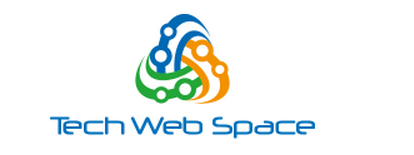
In the face of growing regulatory pressures on financial institutions, loan servicing software has now become an essential requirement. The year 2025 requires financial institutions to adapt to complex regulatory compliances while managing their loan portfolios. Manual processes pose a greater risk of non-compliance. Hence, automated systems are essential for maintaining operational accuracy and efficiency.
An online loan management system helps create simplified processes and lower compliance risks. Loan servicing software for private lenders offers specialized tools that match their specific regulatory needs.
The banking industry has been quick to catch on to the trend toward digital implementations. The global loan servicing software market is set to increase by USD 2.70 billion over the forecast period from 2024 to 2028, experiencing a CAGR of 12.01%. Automated systems help lenders avoid penalties and improve customer experience through faster approvals and clear communication.
Manual Loan Servicing Challenges in a Regulated Environment
Lenders that handle loans manually expose themselves to serious operational risk. Servicers of loans need to work around tougher and more frequent regulations to protect consumers and maintain market stability. These regulations play a vital role but can create challenges for servicers who use conventional loan servicing methods.
1. Data Entry Errors and Compliance Gaps
Manual data entry carries substantial accuracy risks, particularly when dealing with sensitive data such as social security numbers or loan figures. A single incorrectly placed digit can result in expensive compliance violations and operational delays.
As loan portfolios grow, document management becomes increasingly challenging. Paperwork gets disorganized, version control falls apart, and staff spend countless hours putting together compliance reports. These reports often lack the consistency that regulators require.
2. Delayed Reporting and Missed Deadlines
Mortgage servicing examination procedures demand detailed requirements in everything from payment processing to foreclosure management. As regulations evolve, manually meeting these standards becomes increasingly challenging. This leads to inefficiencies and heightened compliance risks.
3. Inconsistent Customer Communication
Manual loan servicing significantly impacts customer experience, with noticeable differences in communication quality across various channels. Live agents provide more effective and personalized support to improve customer communication.
Tracking borrower communications becomes a massive challenge with manual workflows. Teams struggle to keep consistent interaction records without centralized systems.
These problems highlight the necessity for private lenders to implement loan servicing software. Loan management systems are a reliable solution for ensuring compliance— an area where manual processes fall short in today’s complex regulatory landscape.
Compliance-Driven Features in Modern Loan Servicing Software
Modern compliance requirements need specific technology solutions that automate complex regulatory tasks. Loan management software has evolved and is now equipped with specific features that address compliance challenges faced by lenders of all sizes.
A. Automated Interest Rate Calculations and Fee Disclosures
Advanced loan servicing solutions now offer automated fee management systems to reduce errors that can get costly in loan processing.
These systems ensure Loan Estimates match Closing Disclosures through patented monitoring technology that:
- Automatically recalculates fee changes
- Simultaneously notifies lenders and closing agents
- Delivers accurate tax data to meet TRID three-day disclosure requirements
Integrated software helps lenders maintain transparency with borrowers through automated fee disclosure, which supports regulatory compliance effectively.
B. Built-in HMDA and CRA Reporting Modules
Loan servicing software for private lenders is equipped with HMDA and CRA compliance tools. These modules help institutions import, collect, edit, and submit regulatory reports accurately. As data requirements expand, the risk of errors increases. This prompts more financial institutions to adopt technology solutions that enhance data collection and reporting accuracy
Cloud-based CRA and HMDA solutions enable users to review, scrub, and correct data before sharing reports with management or examiners. By integrating with leading Loan Origination Software (LOS) platforms via modern APIs, these solutions help companies digitize and automate compliance operations, improving accuracy and efficiency.
C. Immediate Risk Alerts and Exception Tracking
An online loan management system now features automated covenant management and exception tracking. AI-assisted document validation provides traceable testing of covenant compliance that users can monitor across entire portfolios.
Early warning signals based on performance indicators help identify potential risks before they become problems. Also, automated alerts flag noncompliance issues faster and notify staff when details are missing or incorrect.

How Loan Servicing Software Supports Regulatory Readiness
Regulatory compliance requires systematic approaches to data management and security. Loan servicing solutions create structural frameworks that prepare lenders for audits and examinations through several key capabilities.
1.Centralized Data for Audit-Ready Documentation
Loan servicing solutions offer a secure, centralized repository to store and update loan data and documents. These platforms eliminate the need for several spreadsheets and isolated systems. This minimizes the chances for errors or loss of data. Lenders are able to easily access particular documents required for audits or regulatory reporting.
Complete audit trails ensure regulatory compliance by monitoring user activity and accounting entries. These trails minimize errors in data entry and increase data integrity. By logging user actions, approvals, changes, and timestamps, audit trails provide a transparent history that ensures accurate monitoring and effective compliance management.
2. Role-Based Access Controls and User Activity Logs
Role-Based Access Control (RBAC) lets administrators grant permissions based on user roles. Users can only access data relevant to their responsibilities, which minimizes data breach risks and maintains information integrity.
Regulators gain transparency through RBAC regarding who accesses or modifies sensitive information. By enforcing the principle of least privilege, RBAC mitigates cybersecurity vulnerabilities. This ensures that users only have the permissions necessary for their roles.
System activity logs provide a detailed record of user actions. These logs capture details about configuration changes, updates, and access to sensitive information like credit card numbers. The logs create auditable frameworks that ensure compliance during examinations by tracking and verifying modifications with precision.
3. Integration with Risk and Compliance Tools
Online loan management systems integrate with risk and compliance tools to help lenders keep up with regulatory changes.
These integrations offer several advantages, including:
- Live monitoring tools that provide a comprehensive view of operations
- Automated alerts to ensure timely resolution of unaddressed notifications
- Workflow analytics that identify processing bottlenecks
Loan servicing software for private lenders uses automated compliance technology to perform complete audits and identify errors before submitting data to regulators. This integration makes origination processes more efficient and improves response to regulatory changes.
Conclusion
As regulatory demands continue to evolve, financial institutions must swiftly adapt to ensure compliance. In 2025, loan servicing software has become indispensable for lenders navigating an increasingly complex regulatory landscape. These digital solutions fix the basic flaws in manual processes and create operational advantages.
Manual loan servicing creates many risks for lenders through data errors, missed deadlines, and poor communication. Automated systems have emerged as the clear solution to these challenges. Loan servicing software for private lenders offers specialized compliance features that surpass manual processes, including automated calculations, built-in reporting modules, and real-time risk alerts.
The benefits of loan software go beyond compliance advantages. Private lenders have reduced legal risk through automated workflows. Self-service portals are transforming borrower interactions and instilling trust by making things transparent and accessible. Cost savings delivered through automation enable lending teams to concentrate on relationship-building and expanding their portfolio.
Financial institutions that utilize online loan management systems are in a better position to manage today’s regulatory demands. Loan servicing solutions are important for lenders trying to balance compliance and operational efficiency. Companies that implement loan management technologies today will be leaders in an increasingly regulated lending landscape.

